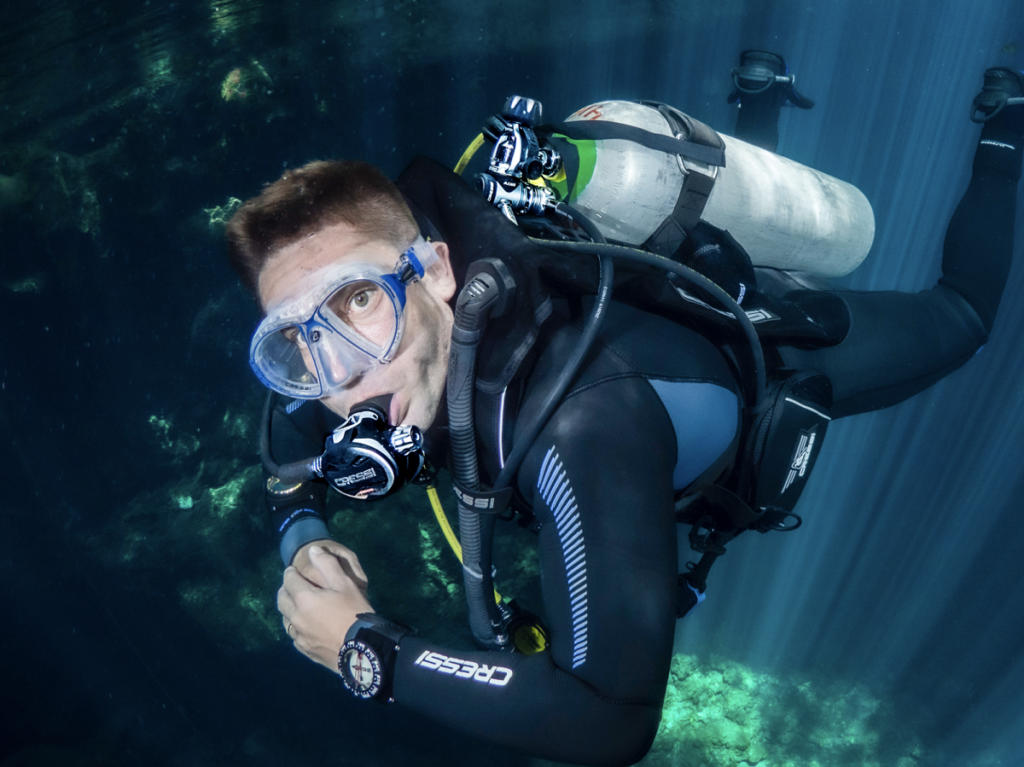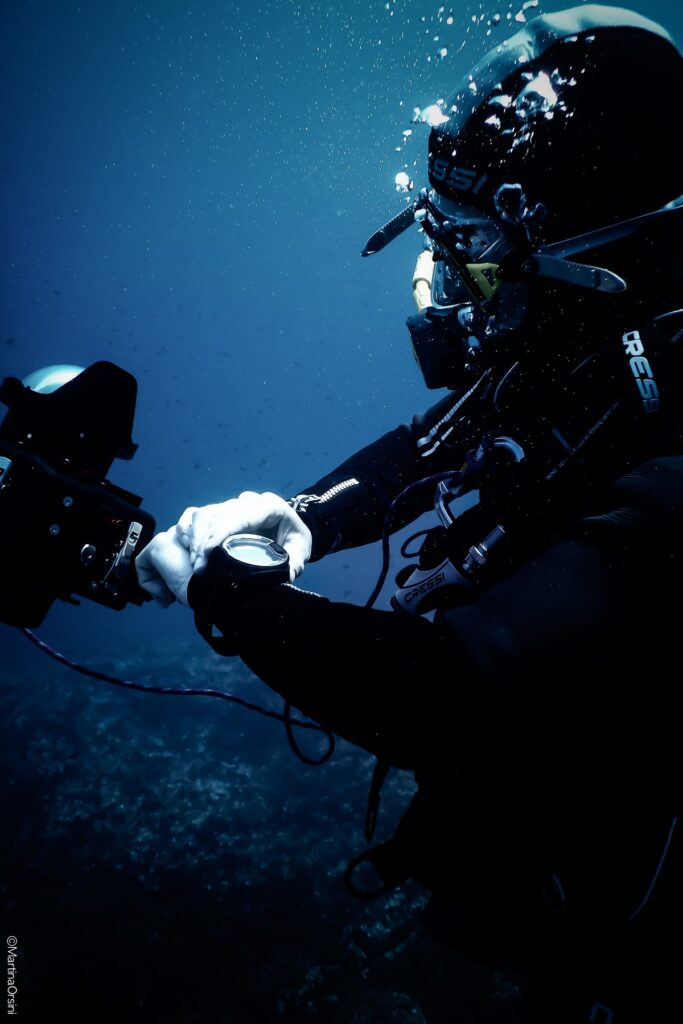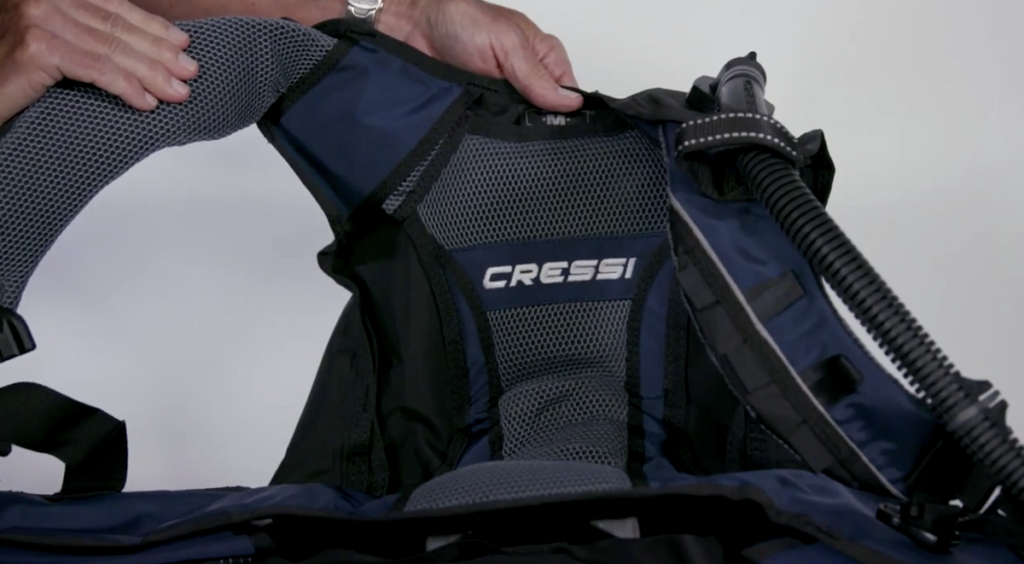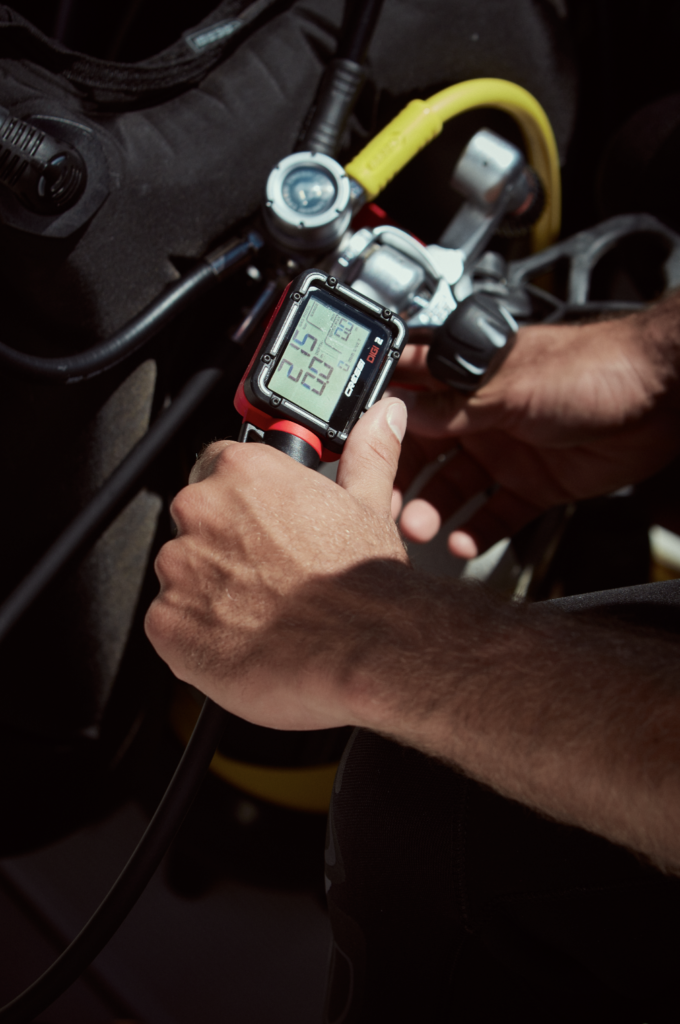For the sake of simplicity, we will break this out into scuba hardgoods and scuba softgoods. We’ll start with the hard goods as that is ultimately the meat and potatoes of diving, the stuff that keeps you safe as well as alive.
First up is the Master Chromo Regulator paired with the piston AC25m first stage. I requested the piston first stage because it can be adjusted in the shop by a pro to increase or decrease flow by 10-15%. For me, I often need more airflow, and by more airflow, I mean a lot more airflow! My Gates Housing for my RED Digital Cinema 8K IMAX Certified Monstro, with the 7” monitor on top is my most cherished and trusted weapon in the arsenal. But because I am so committed to perfecting the craft, that does mean the housing does require extra tools which increase drag, drastically. I compare it to trying to run the 100-meter dash while hooked up to a parachute behind you. There has been a time or two where I was kicking so hard to stay with a group that I couldn’t suck enough air that I did ended up doing a C-E-S-A and ended the dive in dramatic and highly not recommended fashion for fear that I may pass out underwater. Fortunately, in both instances I was okay as depth and dive time both were not extreme and I knew that. Interestingly though with the AC25m, I found I did not even have to touch the first stage because the Master Chromo 2nd stage is an absolute game changer! It has the standard airflow adjustment on the top like most others, pre-dive and flip to dive, but it also has a second on the left-hand side which is more rare. Yes, that’s right, this is a mid-dive adjustable flow regulator so when I need more flow, I can get it right then and there, not having to wait to get to the surface to adjust in between dives. And the amount of additional flow you can get is quite a lot, almost like breathing naturally on land after a dive.

The other thing I like about the AC25m is the rotating turret which swivels on 360° axis and features 5 low-pressure ports designed to allow the use of more connections without interfering between them. When you turn your head with your second stage in, it moves with you rather than tugging on the hose like most others. But, diver beware with any piston based first stage instead of diaphragm, the piston based ones generally can freeze up on you below 50-degrees Fahrenheit which is no bueno! I take an extra level of caution and don’t use it below 60-degrees Fahrenheit. When doing cold water diving, I switch it up to my MC9 diaphragm 2nd stage. But aside from that, it breathes spectacularly and paired with the Master Chromo is a beauty of a pairing. Also, the balanced MG octopus is a nice update to some of their previous ones as well.

For dive computers, I have previously owned the Cressi Edi and several Leonardo’s. What I need is something simple and bulletproof. The Donatello is their latest computer and it accomplishes the same, very similar to the Leonardo in form and function. It is simple, easy, bulletproof and I too took the wristbands off as well so it can sit on my upper forearm too by attaching 1/8” bungees through the wrist strap holes. I do also have the CDP3 analog console and I think I will travel with both it and the Digi2, alternating between them depending on the situation and application. I can now do that and deal with the extra travel weight because Cressi designed a new BCD which, is super easy to pack, the Lightwing BCD.

The Lightwing BCD is super cool. It came rolled up like a burrito, I couldn’t believe it! It takes up so much less space that way and it is super lightweight. I did have a little trouble with weight the pockets at first but then found a trick. Let gravity do the work! I do a lot of cold water diving so that means lots of weights to get you down. Between the tank, camera, and weights I usually enter the water with 120-130 lbs. on me, sometimes up to 150 which I will get into in a moment. The weight pockets will be absolutely full of weights in cold water diving, each allowing up to 10 lbs. max. The trick is to simply lay the BCD down on its back, and let the weight pockets plop right in, easy. The connection is very robust and super secure too, more so than in the past, which is reassuring as I have had a weight pop out when climbing up the dive ladder. Fortunately, it was recovered but at a place like Socorro’s Roca Partida, that would not be possible as it’s 400+ ft straight down.

From analog to digital, the great debate. I did not know how I would feel about going from tried and true, bulletproof analog to something that needs a battery which can die or get water in and fail, but the Digi2 digital console is something I quickly came to like, and like a lot. Knowing precisely how much air I have, down to the single digit, is a confidence builder and as someone who is constantly filming, I never dive without filming, ever, having access to precise down to the single digit information is simply clutch. But, you do lose one thing with it, the compass! So for me, I just bought a Cressi compass and removed the wristband and replaced it with 1/8” bungee, making loops so it can sit on my upper forearm, the same thing I do with my dive computer so I know my depth, deco limits, etc. without having to take my hands off the camera. I just simply look down with my eyes.
Second Product review soon.
Feel free to follow my adventures and cinema work on Instagram at @thebeaconscollective
www.instagram.com/thebeaconscollective as well as at vimeo www.vimeo.com/thebeaconscollective

The Beacons Collective
I am very excited to be part of the Cressi family as an ambassador for 2021. I have been diving for over 15- years all over the world and over the years have had all sorts of Cressi gear from…Read More
